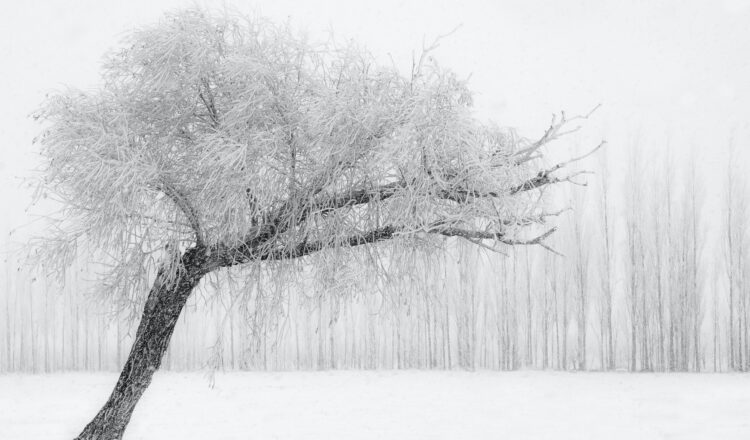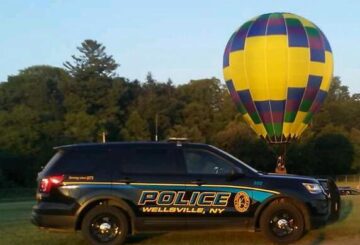by M. L. Wells, Master gardener volunteer, Allegany County Cooperative Extension
I felt like one of the three little pigs in the last house standing as the winds howled, huffed and puffed and roared around close to hurricane force (seventy-five miles per hour). The temperature dropped 35 degrees in a few hours. You couldn’t see the woods 600 feet across the swale. The blizzard of a generation had arrived in western New York over Christmas weekend.
Since I wasn’t going anywhere, I decided to write this next column about wind-breaks!
Thirty-five years ago I had planted fifty white spruce, a foot-tall, at three years of age, in three rows, each tree about ten feet apart. This was about two hundred feet to the west of the house. Now, about a third of a century later, they stand thirty–feet high and their wind-shadow spreads three-hundred feet downwind to the east.
On trips west, leaving the four-lane in mid-Kansas, one becomes aware of the shrinking, then vanishing eastern forest. By mid-Kansas you have left behind the following of the Tallgrass prairie where the remaining are hugging the river banks. In short order, the mixed-grass prairie is left behind and by the eastern Colorado border you are in the Shortgrass prairie–a true desert (less than 10 inches of rain per year).
European settlers began arriving in force after the Civil War. By the 30s, they began to plant shelterbelts to the north and west of their homes. Usually these trees were also immigrants, the Norway spruce from Scandinavia, one tough tree. Its protection made life out there bearable, especially for the winter. It provided habitat for birds and small mammals. It provided a pathway for eastern birds like Chickadees and Woodpeckers to expand westward into a previous alien environment.
So, getting back to our blizzard of a generation. To be a blizzard the storm needs to meet three criteria: 1) last at least three hours 2) have an average wind speed of 35 miles per hour 3) reduce visibility to ¼ of a mile.
Here on the hill the temperature dropped 10 degrees in 20 minutes. We went from 34 degrees at 9:00 a.m. on Friday, December 23, 2022, -5 degrees within 12 hours later! And the wind howled for 2 and a half days.
P.S. With the 50-mile-per-hour wind and minus 8 degrees, the wind-chill factor meant it felt like minus 40 below –BRRRR!






